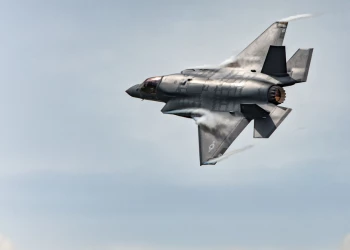Defense News Digest: Week of June 3rd
Add bookmark
Welcome to IDGA’s weekly news roundup. For over two decades, IDGA has organized conferences designed to further the national security objectives of the current administration and to facilitate the acquisition priorities of the DoD, DHS, and other federal agencies. Now, through this weekly series, we look to educate the community on the latest research, program updates and news in the defense and government sector.
This week we are highlighting 5 stories, including executive actions on the southern border, a new NATO framework, and more.
Executive action on the southern border
On Tuesday afternoon migrants who arrived at the U.S.-Mexico southern border were cut off from accessing the U.S. asylum screening system following an executive-order from President Biden.
According to the AP, the asylum shutdown will occur once undocumented border crossings reach an average of 2,500 a day, which is lower than daily figures are at now. Meaning that asylum seekers won’t be able to cross the border until the daily average drops below 1,500 people.
Besides suspending entry of non-citizens who cross the southern border without documentation, the executive order also aims to strengthen the asylum screening process, and enhance immigration enforcement.
“This proclamation, in conjunction with steps to be taken by DOJ and DHS, is needed to enhance our ability to address the historic levels of migration and more efficiently process migrants arriving at the southern border given current resource levels,” said President Biden in a statement.
Army posts RFI for software development support
Last week the U.S. Army released an RFI for a new 10-year multiple award, indefinite-delivery/indefinite-quantity (IDIQ) contract, with a potential value exceeding $1 billion. The RFI, which is led by the Army Materials Command (AMC) and Army Contracting Command (ACC) is aimed at providing software development support for the military.
The contract awardee will be responsible for tasks such as developing custom software products, modifying existing software, enabling software as a service, and modernizing software security and hosting. Responses are due June 10.
Palantir awarded DoD contract for AI platform
Last Wednesday the DoD awarded Palantir $480 million contract for a prototype called Maven Smart System. Maven is an AI intelligence gathering platform that takes in data from various sources to identify military points of interest and to speed up intelligence analysts' work. The contract has an expected May 2029 completion date.
Maven Smart Systems is already accessible, from the Joint Staff in the Pentagon to operational Combatant Commands, including Central Command in the Middle East, European Command, Indo-Pacific Command, NORAD/Northern Command in the US and Canada, and the worldwide Transportation Command. Now with this added contract the Pentagon has the option to expand Maven Smart Systems to other Combatant Commands.
Marines purchase tactical robots
Amidst the rising demand for unmanned platforms, the US Marine Corps has purchased 200 tactical robots for $30 million from the Israeli company Roboteam.
The Marines purchased a 15 kilogram Micro Tactical Ground Robot (MTGR) system, which is a man-portable robot. The MTGR has treads and a manipulator arm that it can use to investigate objects, as well as handle communications and optics.
The initial order is for 130 of the systems, part of a larger order for a total of 200, for which Roboteam hopes to complete delivery in the first quarter of 2025.
NATO to expand intelligence sharing with Ukraine
NATO nations, including the U.S., are planning to expand cooperation with Ukraine on defense technology and share more intelligence about Russia’s electronic warfare capabilities. A formal agreement that introduces new frameworks for information sharing will be finalized before the alliance’s July Summit in Washington.
One goal of the information sharing program is to help make Ukraine a large-scale tech provider following the war. NATO also aims to replicate and learn from the rapid tech adoption and deployment by the Ukrainians since the war began in 2021.

























